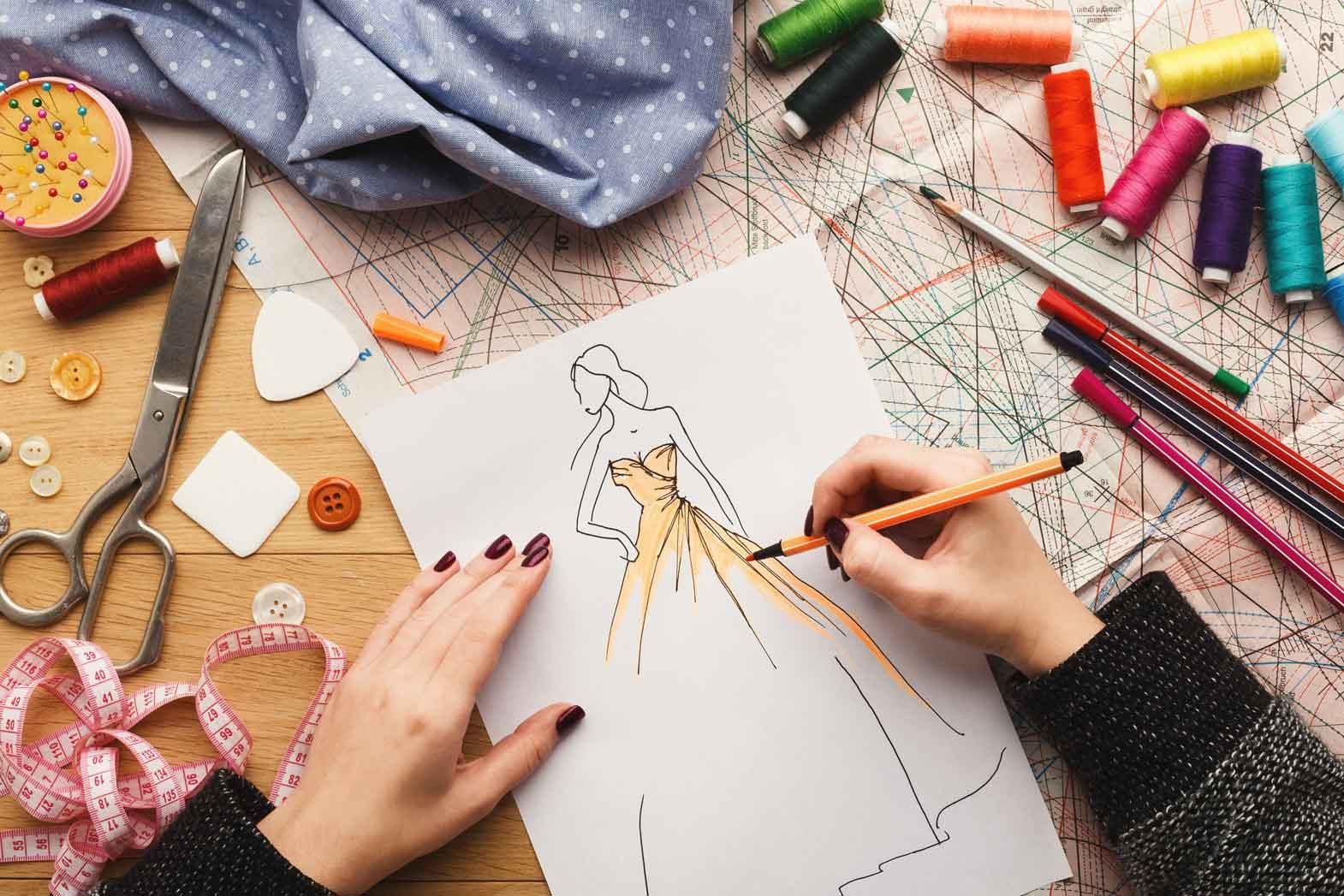Fashion, an industry inherently visual-driven, finds its essence in the art of fashion illustration. In the words of Tim Walker, fashion illustration is a celebration of individuality, creativity, and imagination—a reminder that fashion is not just clothing, but an art form in itself. More than a design tool, fashion illustration breathes life into a garment before it is even sewn. Fashion illustration, as the visual language, aids designers in connecting with clients by exploring, iterating, and translating ideas into tangible concepts through abstract vignettes before investing in prototypes.
Artistic Expression and Techniques
Before getting into the processes of fabric selection or the finalisation of well-defined silhouettes, fashion illustrators use tools like pencils or digital strokes to experiment with proportions and details. This creative freedom allows them to express themselves without any barriers. With these illustrations, an illustrator can articulate their artistic vision, capturing the drape of the fabric, the stylistic preferences unique to the client and the visual representation of the initial idea in its early stages.
Beyond its function as a communication tool, fashion illustration is an art form. As articulated by Coco Chanel, by skilfully using light and shadow, illustrators bring the designs to life through depth, texture, and a sense of movement. The choice of medium, whether it is the soft shades of graphite, pastels or translucent hues of watercolour, everything becomes a crucial part of artistic expression, conveying the creative mood of the garment. Each material, from silk to denim, is rendered, allowing viewers to vividly sense its tactile qualities. This art form holds particular significance in haute couture, where the focus lies on creating bespoke pieces for specific individuals.
Historical Evolution
With a rich history spanning over 500 years, fashion illustration has evolved from its utilitarian role as a visual tool demonstrating garments for tailors and dressmakers to a nuanced art form. The roots of this discipline can be traced back to the 16th century, fuelled by the spirit of exploration and curiosity. Italian engraver and painter Cesare Vecellio’s 1590 woodcuts depicting diverse garments from Europe, Asia and Africa stand as the first dedicated illustrations in fashion.
From the 16th to the early 20th centuries, fashion illustration served as a vital tool for both designers and tailors. It played a crucial role in conveying ideas, showcasing intricate details, and serving as a communication bridge between the creative vision and its final execution. The 1930s witnessed illustrated Vogue covers replace their place with photography, confining fashion illustration to the niche of haute couture. Similarly, the 1950s saw editorial budgets shift focus towards photography, leaving illustrators to focus on lingerie, accessories and advertising. The 1980s witnessed a revival led by artists like Antonio Lopez and Stephen Stipelman, while the 1990s saw a resurgence fuelled by the advent of digital tools.
Challenges, Revivals and Modern Trends
Despite several challenges, fashion illustration demonstrated remarkable resilience as the turn of the millennium witnessed a renewed interest, with artists drawing inspiration from past masters like Rene Gruau. The emergence of digital tools ushered in a new era, providing artists with unprecedented speed, flexibility, and precision. Software like Adobe Illustrator not only revitalised the practice but also made it more accessible for designers, facilitating a smoother, faster iterative experience.
Narrative Function and Cultural Significance
Despite the prevalent dominance of photography, fashion illustration continues to hold importance within the design process. Unlike photographs, which capture a singular, static image, fashion illustration offers a sense of unparalleled freedom of creativity and expression. By exaggerating and emphasising abstract details, illustrators allow viewers to comprehend the essence and emotion of a garment through artistic interpretation beyond its realistic representation. While the models embody personality and expression, the backgrounds set the scene for the overall narrative. An illustration, for example, might depict a model wearing a flowing, white dress against a backdrop of crashing waves, evoking a sense of freedom and escape.
Using the themes of fluidity and abstraction, fashion illustration today demonstrates elongated proportions for an ethereal aesthetic. It is characterised by dynamic lines and expressive brushstrokes, capturing the kinetic energy of fashion in motion. Whether depicting the swish of a skirt or the posture of a model, illustrators aim to bring designs to life on the page.
Rendered in traditional or digital mediums, fashion illustration serves a crucial function—to narrate the story of a garment. As Grace Coddington eloquently puts it, they are “poetry on paper”, a delicate fusion of line, form and emotion that transcends the boundaries of mere representation. This narrative ability to capture emotions and interpret designs in ways photography cannot, ensures its continued relevance for both designers and fashion enthusiasts alike.
Conclusion
Fashion illustration stands as a testament to the fusion of artistry and functionality within the dynamic realm of fashion. From its humble origins as a tool for conveying garment designs to its evolution into a nuanced art form, it has continuously adapted to the changing landscape of the industry. As articulated by luminaries such as Coco Chanel and Grace Coddington, fashion illustration transcends mere representation to become a form of storytelling—a delicate interplay of line, form, and emotion.
Despite the challenges posed by the advent of photography and shifting editorial preferences, fashion illustration has demonstrated remarkable resilience. Revivals led by visionary artists and the integration of digital tools have breathed new life into this age-old practice, ensuring its continued relevance and accessibility for designers and enthusiasts alike.
Beyond its practical function as a design tool, fashion illustration serves as a cultural artefact, reflecting the spirit of the times and enriching the visual language of an era. Positioned firmly within the ongoing fashion dialogue, it not only captures the essence of individual garments but also contributes to the broader narrative of the industry.
In essence, fashion illustration remains a cornerstone of the fashion world—a poetic expression that brings designs to life, evokes emotions and fosters creativity. Its enduring legacy ensures that it will continue to inspire and captivate audiences for generations to come, further cementing its status as an indispensable element of the fashion landscape.









Comments